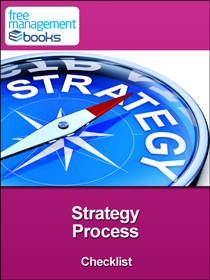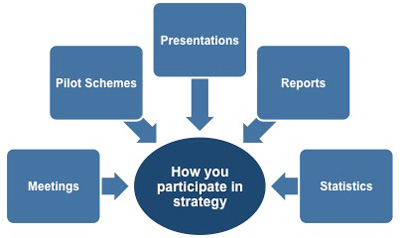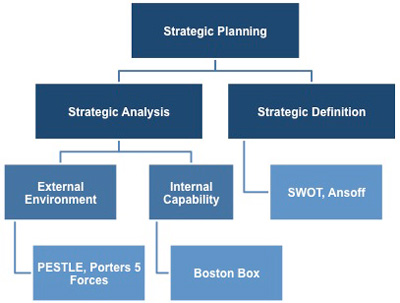Strategy Process Checklist
 |
||
 |
||
This Strategy Process checklist describes a twelve-stage process that will assist you in developing your strategy and gaining approval for it.
Today's organizations find themselves operating in an environment that is changing faster than ever before. The process of analyzing the implications of these changes and modifying the way that the organization reacts to them is known as business strategy.
'Strategy is the direction and scope of an organization over the long term, which achieves advantage in a changing environment through its configuration of resources and competences' Johnson et al. (2009).
![]()
![]()
While your role as a manager is unlikely to require you to make decisions at the strategic level, you may be asked to contribute your expertise to meetings where strategic concerns are being discussed. You may also be asked to comment on pilot schemes, presentations, reports, or statistics that will affect future strategy.
 |
Typical scenarios where you could be asked to provide information and data for your organization's strategic decision making include:
• Analyzing the organization's external environment.
• Assessing the organization's internal capabilities.
• Assisting with the definition of the organization's strategy.
• Aiding in the implementation of the organization's strategy.
Whether you work in a large multinational corporation or a small organization, a good understanding of the appropriate business analysis techniques and terminology will help you to contribute to the strategic decision-making processes.
 |
The diagram above shows where five widely used business analysis tools fit into the strategic planning process.
SWOT Analysis
The SWOT analysis is a business analysis technique that your organization can perform for each of its products, services, and markets when deciding on the best way to achieve future growth. The process involves identifying the strengths and weaknesses of the organization, and opportunities and threats present in the market that it operates in.
Ansoff Matrix
The Ansoff Matrix, or Ansoff Box, is a business analysis technique that provides a framework enabling growth opportunities to be identified. It can help you consider the implications of growing the business through existing or new products and in existing or new markets. Each of these growth options draws on both internal and external influences, investigations, and analysis that are then worked into alternative strategies.
Boston Matrix
The Boston Matrix is used to allocate resources depending on how a product or service is positioned in the market. It can be used to analyze business units, product lines, and services.
PESTLE Analysis
A PESTLE Analysis can be used to consider political, economic, social, technological, legal, and environmental issues that may affect your organization. It is often used when launching a new product or service, exploring a new route to market, or selling into a new country or region.
Porter's Five Forces Analysis
Porter's Five Forces model is regarded as a credible and practical alternative to the widely used SWOT Analysis. The five key factors the model uses to identify and evaluate potential opportunities and risks are: competitive rivalry, threat of new entrants, threat of substitutes, bargaining power of suppliers, and bargaining power of customers.
This knowledge will enable you to take an active and productive role when asked to participate in the strategic decision-making process.


